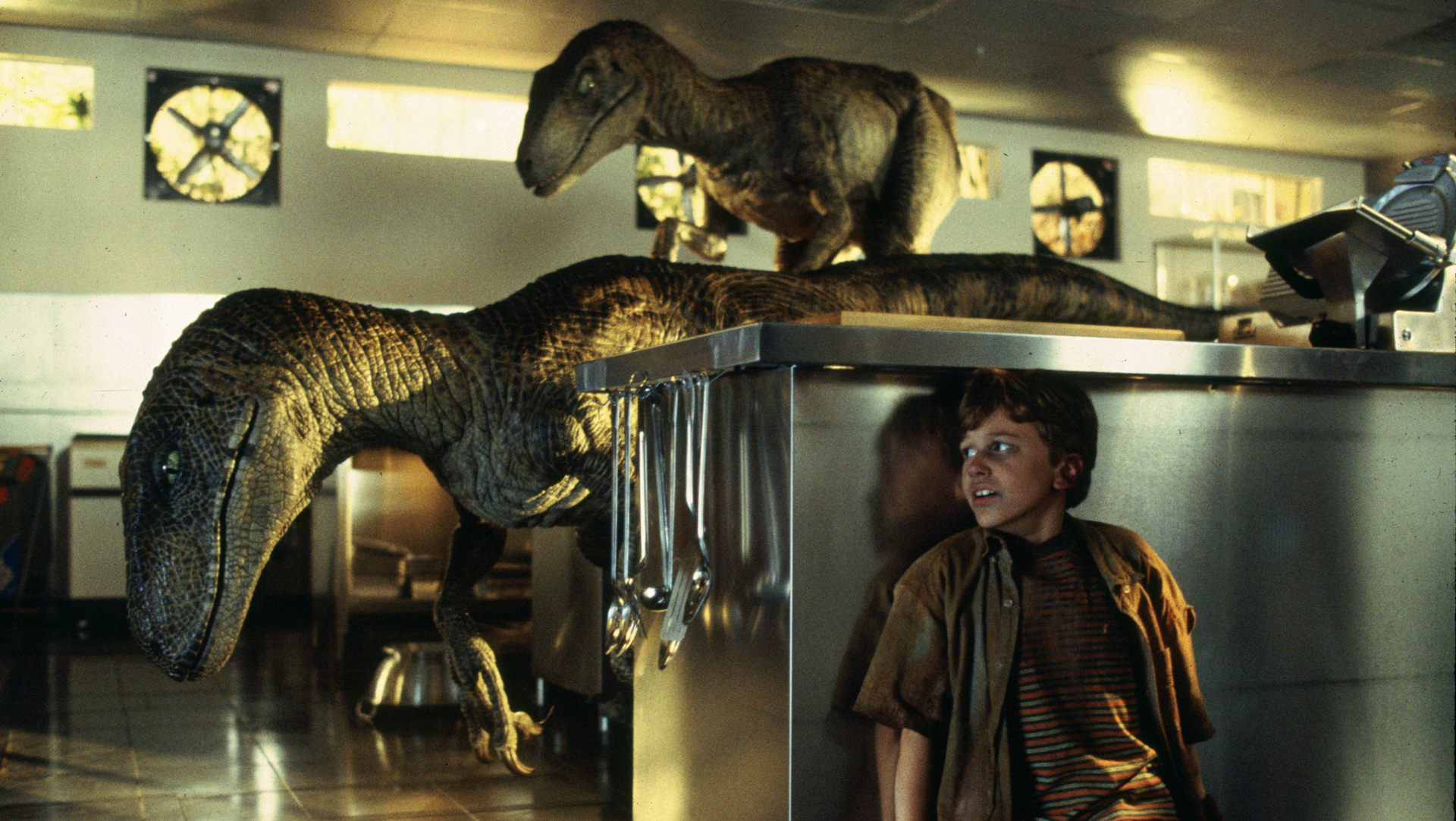

Over the past 20 years, the man who invented the blockbuster film has time and time again attempted to retain his title as the king of popular entertainment in cinema while also distancing himself from the notion that he is a purely populist filmmaker cynically attempting to earn maximum profit at the expense of quality. In order to accomplish this he’s resorted every few years to the not-too-subtle tactic of releasing two movies within the same calendar year, one a serious drama and the other a big “event” motion picture designed to appeal to teenagers and children. 2011 brought us the schmaltzy, derided-as-Oscar-bait “War Horse” and the animated “The Adventures of Tintin;” in 2005 came the criminally underrated disaster movie “War of the Worlds” and the politically ambiguous morality tale “Munich;” and in 1997 came historical drama “Amistad” and a serious case of sequelitis in the form of “Jurassic Park 2: The Lost World.” But the two most important in this chain of high- and low-brow pairing were 1993’s “Schindler’s List,” which significantly challenged the trend of Spieldberg’s dramas being overly sentimental, weepy affairs, and “Jurassic Park,” the first in a long line of CGI-driven special effects extravaganzas which has all but paved the way for dozens of awful films from the minds of schlockmeisters like Michael Bay. Though “Jurassic Park” may have been designed to perform well in the under-18 demographic, the film has, for better or for worse, become something of a modern classic as far as blockbusters go. This is, after all, a re-release in 3-D of a 20-year-old movie, which does sort of presuppose that the movie made more than its fair share of dollars back when Vanilla Ice was all the rage. That doesn’t necessarily mean it holds up now or was even particularly good then. After all, “Independence Day” will probably be re-released sometime in the next few years.
So how does “Jurassic Park” hold-up? Quite simply, a sort-of solid yet relatively indifferent “pretty good” just about sums it up. While it lacks the grim atmospherics, difficult ethical conundrums or gee-whiz adventurous fun of much of Spielberg’s best work, what’s here is a fun time at the movies, nothing more, nothing less. It’s a solid reminder that for all his sentimentality, Spielberg does have summer-movie credentials that go beyond early efforts like “Jaws,” the de facto first blockbuster. It lacks the heart and charm of something like “Raiders of the Lost Ark” — what will probably always be Spielberg’s best work of pure entertainment — but it’s well-constructed, well-paced, tense and suspenseful, and good God does the CGI look good for something 20 years old.
The story is one that we all know and is pretty inconsequential. The movie’s biggest success can be found at the edge of your seat. While the movie is mostly remembered for its CGI (thankfully the most dated aspect of “Jurrasic Park” is Laura Dern’s 90’s apparel), it’s most important that it is a complement to and not a replacement for sharp directing and fierce editing. In the movie’s standout sequence featuring the T-Rex, Spielberg builds suspense by highlighting the sound of its footsteps and the shaking of a cup of water on the dashboard of a Jeep for several minutes before we even see the beast. And while the more explicit and frequent presence of the dinosaurs on screen robs the film of some of the creepiness of “Jaws,” the film wisely keeps the focus on the characters’ point of view rather than continuously self-indulgently including shots of the dinosaurs in all their primal glory. Later on, a fantastic shot follows a raptor from behind as it charges in which Spielberg’s use of noise and shadow is utterly compelling.
If anything keeps the movie from truly ascending to the upper-echelons of stone-cold suspense-driven thrill-ride classics, it’s that the characters aren’t worth your emotional investment. They’re a few dimensions shy of living, breathing human beings, and this inherently limits the film’s ability to awe in addition to its ability to shock. The acting is suitable, although none of these roles really require stretching out. And there are a few too many moments of humor that keep the movie from really attaining that sense of impending dread that would really take it to the next level. Wayne Knight (“Seinfeld”) as Dennis Nedry is supposed to be the comic relief, but the most embarrassing parts belong to the theme park owner’s grandchildren. While the movie works well in the moment, it’s hard to develop any lasting connection to any of the characters or feel a sense of empathy for them when they’re, you know, being chased by a T-Rex. To quote the late Roger Ebert, “I hate it when that happens.”
The added 3-D is not especially noticeable, which is good in the sense that it isn’t a distraction and bad in the sense that it sometimes feels like you wasted four extra dollars for nothing. But the film is worth seeing either with 3-D or without it, so this is really a non-issue (as is the case with most 3-D films, it seems). And while the phrase “all sound and fury signifying nothing” may apply, when you’re watching Jeff Goldblum stare down a T-Rex as it runs at him and he watches helplessly, I can almost believe the quackish Chaos Theory Dr. Malcolm spouts off throughout the film. I also almost touch heaven for a few fleeting seconds. Maybe that’s just me, but “Jurassic Park” is still worth seeing.